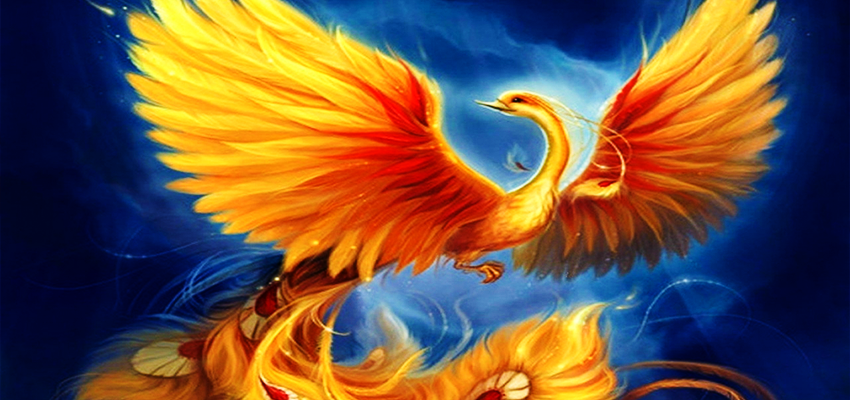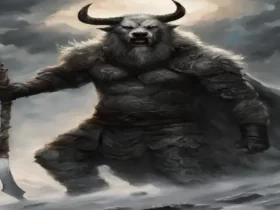The Huma Bird is an ancient creature, No one really knows how this bird gets from place to place. However, it is a mystical and mythical bird that has been around since Iranian folklore and also found in Diwan poetry and Sufi poetry. It’s said to live in the sky but never sets foot on the ground. Some legends say that the bird never takes rest and spends its entire life high in the sky, never venturing to the land below, it means never makes contact with the ground (Earth).
1 Ottoman Poetries Usually Referred To The Birds As A “Bird Of Paradise”

In the early days, descriptions of the Paradisaeidae group initially stated the animals; they were said to be without legs and wings.The metaphor of the bird has been used in many different cultures. One example is found in The Conference of the Birds by Attar of Nishapur. Often thought of as being elevated and superior, the bird is portrayed as a creature that was reluctant to embark on a journey, as it would allegedly compromise the rule of kingship over those it flew over. Iranian literature also uses this concept to represent Arabs as well.
2 Plumes Of Royal Family Members Derived From Huma
The feather-like characteristics of the Huma bird were connected with the bestowal of kingship in traditional Indian mythology. There are several different belief systems and hypotheses concerning the origin of the “plumes of royalty” that comes from the feathers of Huma.
According to some sources, the feathers on the head of a duke were thought to be the plumage of this bird (Huma). The bird has an eminent place in Turkish folk literature; it means the bird is a common motif in Turkish folk literature as well and has been depicted as a symbol of great fortune on countless occasions.
3 Major Origination Of Huma Bird Arises From Iranian Myths & Folklore

This gorgeous creature “Huma” (Bird of Paradise) is one of the many creatures in popular mythology, legend and folklore from countries such as Iran. The Arabic word for this creature is called ‘Huma’, which is thought to come from the words “hu” (spirit) and “ma” “water” which may suggest that it has some kind of spiritual connection to life and fadelessness.
4 This Mythical Bird Has All The Colors Of Rainbow & Very Long Curving Crest Tail
The Huma Bird has distinctive physical characteristics, It is often considered to be a union of male and female forms, as they have distinct characteristics of both. When it comes to the bird’s wings or legs, male and female birds both have one wing and they each have one leg as well.
A more intelligent and colorful bird, one would be difficult to find. The Huma Bird is a brilliantly colorful bird, with a long and curving crest tail and it is so beautifully adorned with all the colors of the rainbow. Anyone looking for beautiful birds would struggle to find anything more dazzling than this one! This bird is often mostly long-necked, like a goose or a swan, though sometimes shorter necks and mini builds. The amazing thing about the Bird is that its extremely long train of tail feathers. Such a great sight to see!
5 Huma Has Advance Intelligence Beyond A Normal Bird

There’s very little known about this attractive bird’s habits. Foremost, the Bird of Paradise never stops flying or never rests from its constant movement and is known for their distinctive style. This bird is well known for its unique perching style it adopts when hunting and cannot actually be seen perched in a tree or even pick food up from the ground. It stays in flight all day long. For the reason mentioned above, the bird is referred to as the bird of paradise.
6 Huma Disappears Naturally At The End Of Its Life
It also makes it possible for some organisms to get around in new ways, as well as give a hint of intelligence beyond that of a more normal bird (mundane bird). When it comes to records of the bird, there is no indication that it’s ever been captured or killed, either by mythical means or mortal. It only ever disappears naturally at the end of its life. In addition to this, the creature has been shown to display a certain level of care about whom it gives its supernatural powers.
7 Indian Counterpart Of Huma Is Homa

Although the bird we commonly call “Huma” is also known by a different name “The Huma Bird” or “Bird of Paradise” as well, the Huma bird is also known by the name “Homa” in the mythological scriptures of India. It has been argued that the meaning of the word “Homa” is related to a sacrificial fire, causing some to believe that Homa was connected with combustion rituals.
8Surprisingly Huma Remains Entire Life In The Sky & Also Lay Eggs In The Air

It is believed that the enormous bird spends its entire life soaring high in the sky and only comes down onto the earth to feast on bones. It occurs in the sky and lays eggs when in the air. Then, those newly hatched eggs start falling down and plummeting toward the ground at a rapid pace or great speed. Energetic chicks hatch in the air and then travel downwards as they become more developed. A baby chick has a distinct way of developing its eyes too.
They’re hatched before they hit the ground and while it’s descending, the chick develops its eyes. As soon as the chick comes close to Earth, it will regain consciousness and emit a shrill cry with fear in its endless fall means with fear of crashing to the ground. It moves in a predictable way and starts to stay stable. When it begins ascending, thereafter, it moves upward towards its safest shelter or place: usually its mother.
9 You Will Be Cursed To Death If You Dare To Capture This Mystic Bird

Trying to catch this bird is considered to be far away from the ability of most people, even those who are passionate about catching the elusive creature. However, there is the belief that if the person who kills it will be cursed to die or eventually dies within forty days, As a consequence, attempts are never made for their capture.
10Many Times Huma Is Represented As Phoenix Like Creature

The bird is considered a fantastic rarity in its day and In many variations of the Huma Bird myths often described as a phoenix-like creature that is reborn again and again; it consumes itself in fire approximately every hundred years (Century).
The idea of the Huma Bird is on fire, and that’s in the same family as burning itself to ashes like the phoenix. This bird is associated with the myth of the phoenix, which is a metaphor for rebirth and immortality in myth. The inner essence of this creature is to self-destruct, as if it’s going to restart completely from nothing.
11 You Would Be The Luckiest Person With Wealth & Good Luck Once You Comes Under Its Shadow

Stories from folklore are full of interesting facts, and in particular the one about a bird with a shadow that can bestow blessings on others. The Huma Bird’s shadow is a symbol for good fortune; it is believed that if the creature’s shadow falls on someone, they will be granted with good luck.
When this bird tries to land on someone, it is an indication that the person has attained a special status. It means the bird is appointed with kingship if it takes a seat on someone.
12 From Iran To Uzbekistan, Huma Bird Can Be Seen As Emblem Of Commercial & National Domain

Iran Air uses a domestic bird called the Huma Bird in its official symbol and The Uzbek Coat of Arms also features it. Emblem of Uzbekistan is set with Huma, where a right-facing Huma is displayed in the center of the emblem with outstretched wings. This bird, named the Huma, symbolizes peace, happiness, and the idea of striving for freedom. It is commonly recognized as the bird that rises from its own ashes.
13 The Huma Bird In Gospel Of Sri Ramakrishna (Verse 88)

References to Homa bird in the sky and its importance are often made in the teachings of Sri Ramakrishna. This subtle yet richly symbolic image is explained by Sri Ramakrishna himself, as mentioned in his Gospel of Sri Ramakrishna (verse 88).
14 Modern Day Influence Suggests It Has Some Connection With European Griffin

The Huma Bird is a large mythical bird that originates from Iran. This creature has been connected with the European griffin and it has motivated many folktales and many stories that are still popular alike today. Humans may not know its true origins, but they love to listen to the tales of this mythical creature.





